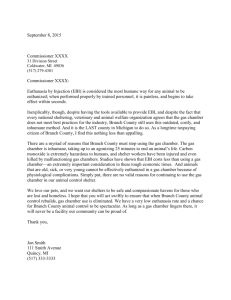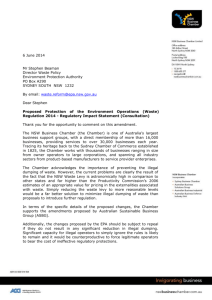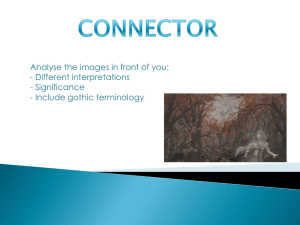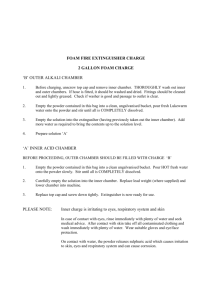growth chamber
advertisement
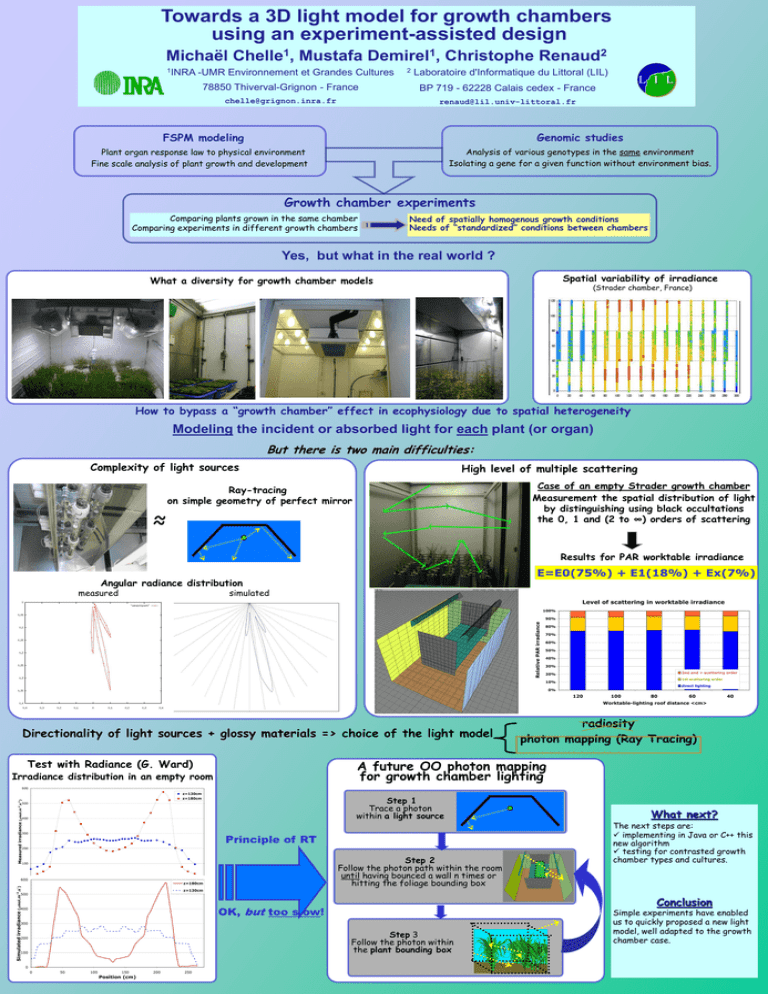
Towards a 3D light model for growth chambers using an experiment-assisted design Michaël 1INRA 1 Chelle , Mustafa 1 Demirel , -UMR Environnement et Grandes Cultures 2 Christophe 2 Renaud Laboratoire d'Informatique du Littoral (LIL) 78850 Thiverval-Grignon - France BP 719 - 62228 Calais cedex - France chelle@grignon.inra.fr renaud@lil.univ-littoral.fr Genomic studies FSPM modeling Analysis of various genotypes in the same environment Isolating a gene for a given function without environment bias. Plant organ response law to physical environment Fine scale analysis of plant growth and development Growth chamber experiments Comparing plants grown in the same chamber Comparing experiments in different growth chambers Need of spatially homogenous growth conditions Needs of “standardized” conditions between chambers Yes, but what in the real world ? Spatial variability of irradiance What a diversity for growth chamber models (Strader chamber, France) How to bypass a “growth chamber” effect in ecophysiology due to spatial heterogeneity Modeling the incident or absorbed light for each plant (or organ) But there is two main difficulties: Complexity of light sources ≈ High level of multiple scattering Case of an empty Strader growth chamber Measurement the spatial distribution of light by distinguishing using black occultations the 0, 1 and (2 to ∞) orders of scattering Ray-tracing on simple geometry of perfect mirror Results for PAR worktable irradiance E=E0(75%) + E1(18%) + Ex(7%) Angular radiance distribution measured simulated Directionality of light sources + glossy materials => choice of the light model Test with Radiance (G. Ward) radiosity photon mapping (Ray Tracing) A future OO photon mapping for growth chamber lighting Irradiance distribution in an empty room Step 1 Trace a photon within a light source Principle of RT Step 2 Follow the photon path within the room until having bounced a wall n times or hitting the foliage bounding box What next? The next steps are: implementing in Java or C++ this new algorithm testing for contrasted growth chamber types and cultures. Conclusion OK, but too slow! Step 3 Follow the photon within the plant bounding box Simple experiments have enabled us to quickly proposed a new light model, well adapted to the growth chamber case.

